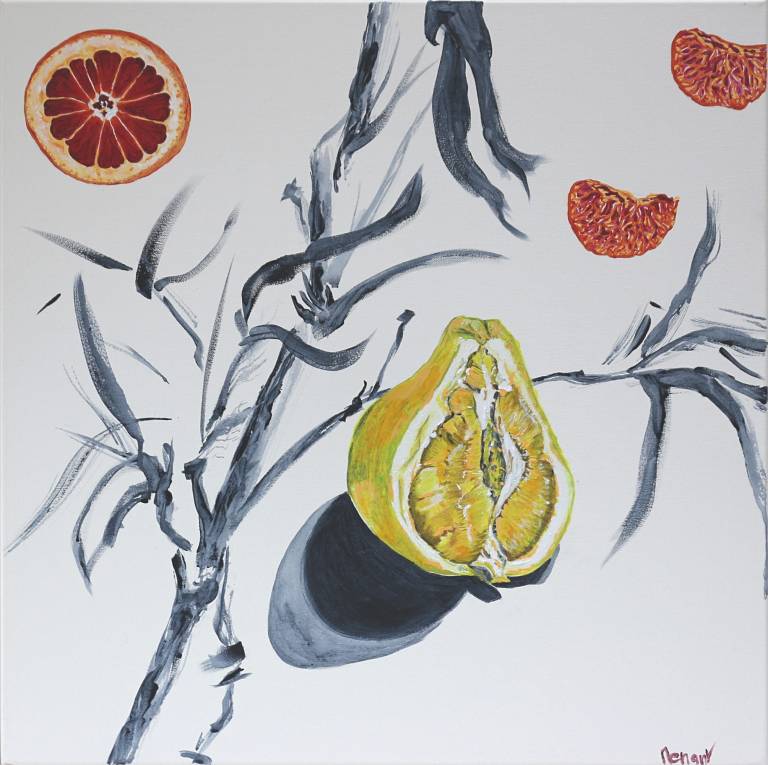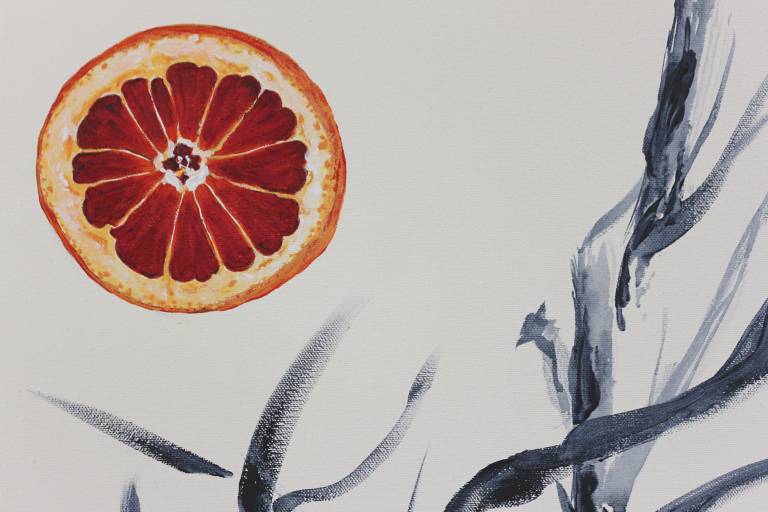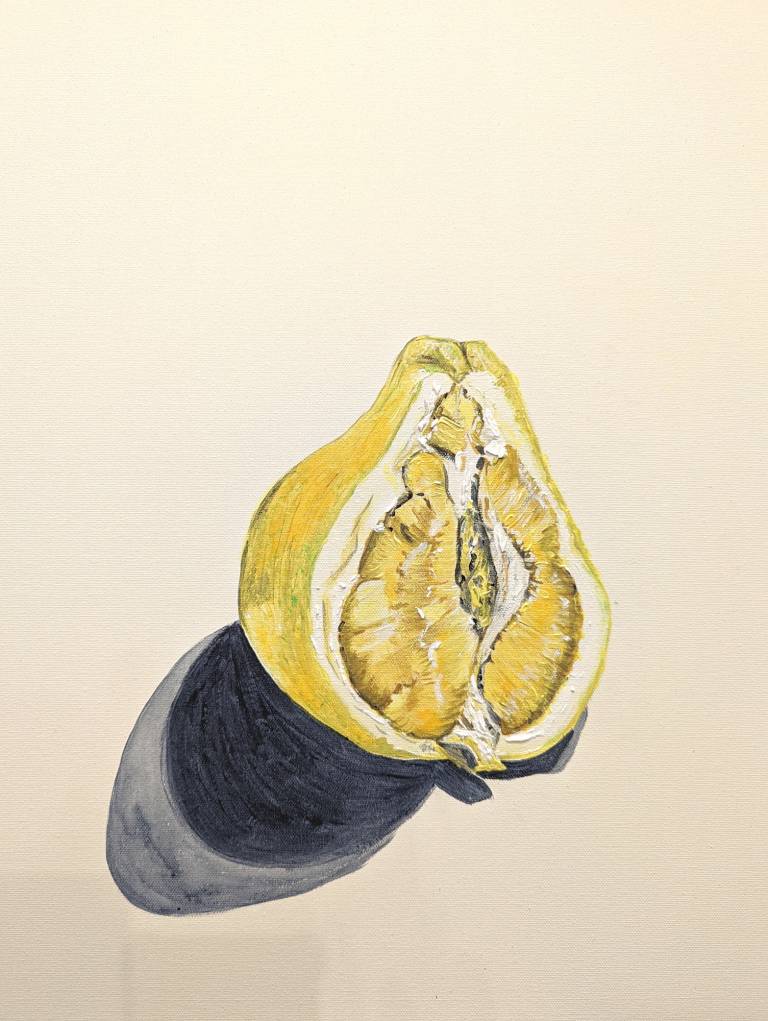POMELO
- Fruit Routes
- Acrylic on canvas
- 60 x 60 x 4 cm (23.6 x 23.6 x 1.5 in)
- Ref: 646623/315
£ 1,200.00
The largest citrus fruit and an ancestor of the grapefruit, the pomelo is native to south-east Asia where it is commonly eaten as a dessert, sprinkled with sugar or salt.
The tear-shaped fruit was introduced to Barbados in the 17th century by the East India Company.
The yellow-green fruit measures up to 25cm in diameter and the segmented flesh has a sweet and sour taste, with a little of the bitterness of grapefruit. It is rich in Vitamin C and the juice is widely regarded as delicious.
It requires patience and practice to crack the code of a pomelo: slowly peel back layers of the scented, thick rind and pith, which can be used for pickling or marmalade, before unearthing the segments deep within.
Restaurateur Palisa Anderson wrote in The Guardian that the pomelo was like a Rubik’s Cube, a type of puzzle that needed solving.
In Asian countries, it is the most common fruit placed in home shrines and at public temples because its plump shape symbolises abundance and continuous prosperity.



